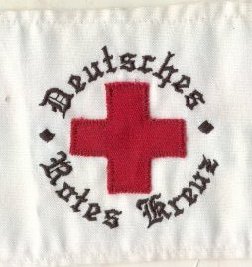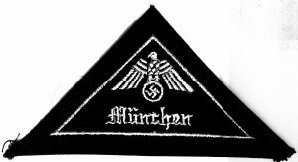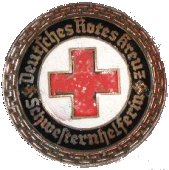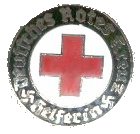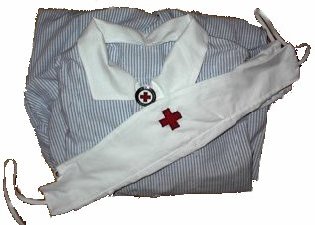
Deutsche Rote Kreuz ( German Red Cross )
By Uscha. Schäfer
Germany had possessed a Red Cross organisation for almost 70 years from the time that is was first established in 1864. Like the majority of those organisations that existed in Germany prior to the Nazis coming to power the DRK was bought into line with other uniformed bodies. Its organisational structure was altered, its uniforms were redesigned and its insignia of rank, qualification badges and decorations reflected both the National Socialist control as well as the new and complex rank structure. The colour traditionally used for DRK uniforms, other than the white nursing clothing, had always been slate grey. This was retained when in 1937 a range of new clothing for nursing sisters, medical officers and medical attendants was introduced. Nurses and sisters displayed their rank insignia by a system of pips worn on the collar of either their white blouse or slate grey tunics depending on the grade. These pips were in blue for the white blouse worn by the lower ranks and silver and gold for the more senior females. A series of coloured enamelled brooches were worn by the nursing sisters to indicate various grades of nursing qualification.
DRK Ranks (Highest to Lowest)
DRK-Generalhauptführerin
DRK-Generalführerin
DRK-Oberstführerin
DRK-Oberfeldführerin
DRK-Feldführerin
DRK-Hauptführerin
DRK-Oberwachtführerin
DRK-Wachtführerin
DRK-Haupthelferin
DRK-Oberhelferin
DRK-Vorhelferin
DRK-Helferin
DRK-Anwärterin
